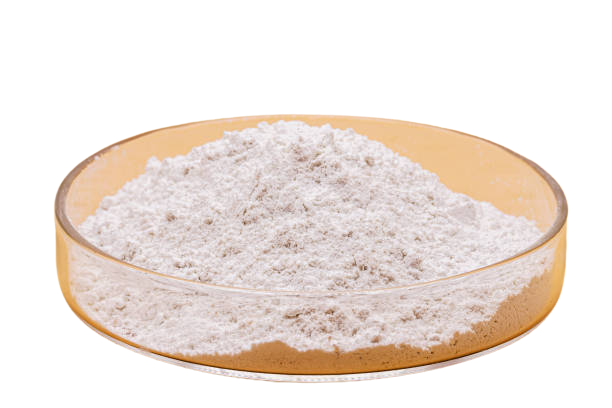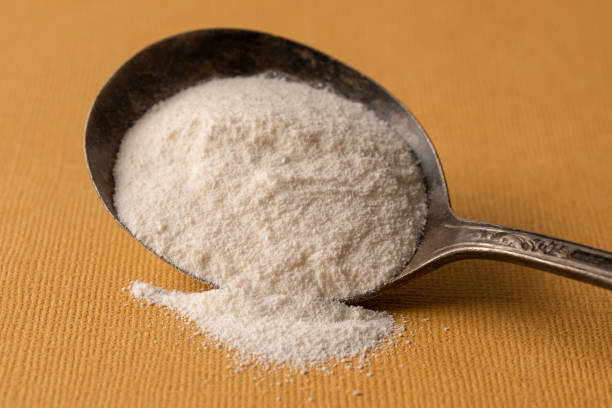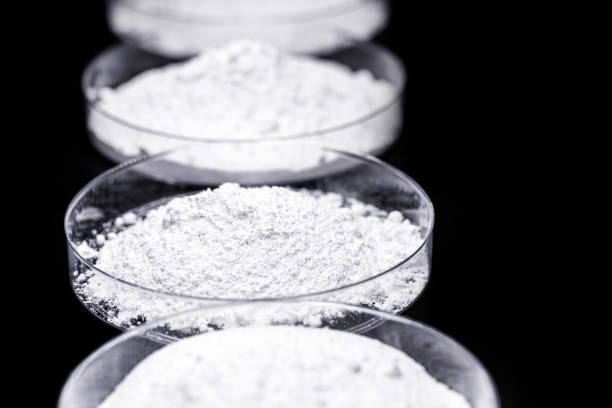Zinc Borate

- Overview
- Application
- Spesification
Zinc borate is an inorganic compound, a borate of zinc. It is a white crystalline or amorphous powder insoluble in water. Its toxicity is low. Its melting point is 980 °C. Zinc Borate is an inorganic compound with the chemical formula ZnB4O7. It is a white, odorless powder that is composed of zinc, boron, and oxygen atoms. The compound is formed by the combination of zinc oxide (ZnO) and boric acid (H3BO3). Zinc borate appears as a white powder of variable composition. (typically 45% ZnO, 34% B2O3 and 20% H2O). Slightly soluble in water. The primary hazard is the threat to the environment. Immediate steps should be taken to limit its spread to the environment. It is used as a fungus and mildew inhibitor, to fire proof textiles, and for other uses.
Zinc Borate is a multifunctional material with various useful properties, leading to its applications in diverse industries. Zinc borate is primarily used as a flame retardant in plastics and cellulose fibers, paper, rubbers and textiles. It is also used in paints, adhesives, and pigments. As a flame retardant, it can replace antimony(III) oxide as a synergist in both halogen-based and halogen-free systems. Its low dehydration on-set temperature of about 120 °C is the primary disadvantage of this zinc borate in many commercial applications. This phase forms at room temperature in an aqueous reaction of borax with zinc salts or reaction boric acid with zinc oxide.
Zinc Borate, with its flame-retardant and smoke-suppressant properties, finds applications in various industries. Some of the common applications of Zinc Borate are as follows:
Flame Retardant Additive: Zinc Borate is widely used as a flame retardant additive in plastics, rubber, and polymers. It helps improve the fire resistance of these materials, making them safer in applications where fire hazards are a concern. Zinc Borate can be found in various plastic products, including electrical enclosures, construction materials, automotive parts, and wire and cable coatings.
Smoke Suppressant: Along with its flame-retardant properties, Zinc Borate acts as a smoke suppressant when incorporated into polymers and plastics. It reduces the amount of smoke emitted during combustion, making it valuable in environments where smoke generation needs to be minimized.
Wood and Cellulose Products: Zinc Borate is used as an antifungal and wood preservative agent in wood and cellulose-based products. It protects the wood from fungal decay and insects, increasing its longevity in various applications, such as in building materials, furniture, and paper products.
Adhesives and Sealants: In the adhesive and sealant industry, Zinc Borate is employed to enhance the flame resistance of these materials, making them suitable for use in fire-prone areas.
Coatings and Paints: Zinc Borate is added to coatings and paints to improve their fire-retardant properties. It finds application in various fireproofing coatings and paints used in construction and other industries.
Ceramics and Glass: Zinc Borate is used as a flux in ceramic and glass manufacturing processes to reduce the melting point and improve the vitrification process.
Electrical and Electronic Applications: Due to its flame-retardant properties, Zinc Borate is used in electrical and electronic equipment to enhance fire safety and reduce the risk of fire-related incidents.
Agriculture: Zinc Borate is utilized as an agricultural fungicide to protect crops from fungal diseases and promote healthy plant growth.
Metalworking: In some metalworking applications, Zinc Borate is used as a lubricant and a corrosion inhibitor.
| Property | Typical Value |
|---|---|
| Chemical Formula | ZnB4O7 |
| Molecular Weight | 435.31 g/mol |
| Appearance | White powder |
| Zinc Borate Content (ZnB2O4) | ≥ 95% |
| Boron Content (B2O3) | 37-40% |
| Zinc Content (ZnO) | 49-52% |
| Melting Point | ~980°C |
| Bulk Density | ~0.6-0.8 g/cm³ |
| Solubility | Insoluble in water |
| pH (10% Aqueous Suspension) | ~8.0-10.0 |
| Particle Size | Typically fine powder |
| Specific Gravity | ~2.7 g/cm³ |
| Moisture Content | ≤ 0.5% |
| Loss on Ignition (LOI) | ≤ 13% |
| Toxicity | Generally considered safe |



